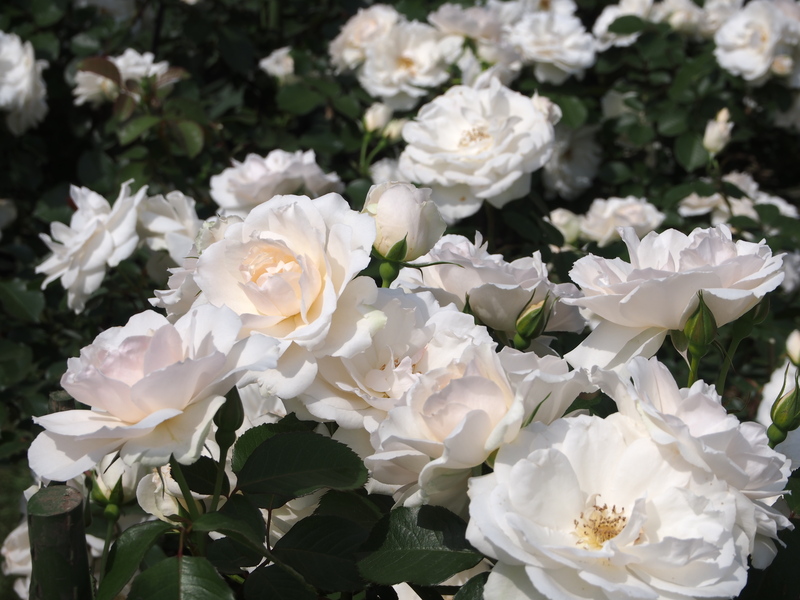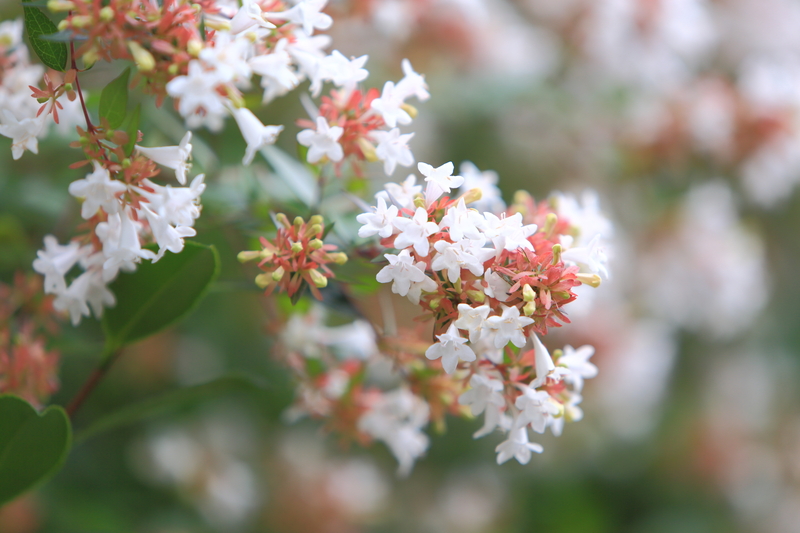The Art of Securing Your Garden Plants in Cold Weather
Posted on 23/09/2025
The Art of Securing Your Garden Plants in Cold Weather
As the chill of winter approaches, gardeners face a common challenge: how to keep their beloved plants safe from harsh, cold weather conditions. Understanding the essentials of securing garden plants during cold weather can mean the difference between a thriving spring garden and a casualty list of wilted, frostbitten flora. This article delves into the comprehensive world of protecting outdoor plants in winter, offering thoroughly researched, actionable, and SEO-optimized tips designed to ensure your garden's vitality through the frostiest months.
Understanding the Impact of Cold Weather on Garden Plants
Cold weather poses numerous threats to both annuals and perennials. From frost damage, dehydration, and windburn to root die-back, the risks are manifold. Cold snaps can destroy tender shoots in a single night, while moisture loss from freezing winds can leave even hardy plants struggling.
- Frost can cause cell walls in leaves and stems to rupture, leading to blackened or mushy foliage.
- Wind strips moisture from plant surfaces, compounding the dehydration caused by dry winter air.
- Sudden temperature swings can be just as dangerous as prolonged cold, as repeated freeze-thaw cycles stress sensitive plants.
- Heavy snowfall and ice can physically damage branches and stems, sometimes breaking mature plants.
Which Plants Need the Most Protection?
- Tender perennials and warm-climate annuals
- Potted or container plants
- Recently planted trees and shrubs
- Tropical or subtropical species
- Vegetable gardens with cool-season crops
Identifying the most vulnerable inhabitants of your garden is the first step in mastering the art of cold weather plant protection.

Best Practices for Securing Your Garden Plants in Cold Weather
1. Mulching: Nature's Blanket
Mulching is one of the most effective techniques for insulating plant roots. Organic mulches like straw, bark chips, shredded leaves, or compost provide a warming layer that retains soil heat and moisture, helping plants survive cold spells with minimal shock.
- Apply a 3-4 inch layer of mulch after the first hard frost.
- Avoid piling mulch directly against the stems to prevent rot.
- Remove excessive mulch in early spring to prevent fungal issues.
2. Row Covers and Garden Fabric
Using horticultural fabrics, also known as frost cloths, can significantly shield your garden plants from cold air and sudden frosts. These fabrics allow light and moisture to enter while protecting plants from wind and extreme cold.
- Drape row covers over plants, securing edges with soil or stakes.
- Choose materials that allow airflow to prevent mold and mildew.
- Remove covers during milder days to avoid overheating.
3. Cloches and Temporary Structures
Cloche gardening involves placing small, portable covers over individual plants or garden beds for added warmth. Cloches can be homemade from old milk jugs or professionally purchased glass domes.
- Ideal for young seedlings, tender vegetables, and flowers.
- Be sure to ventilate during sunny winter days to prevent heat buildup.
- Remove or adjust after severe cold passes.
4. Watering Wisely
Proper hydration is vital for plant survival during winter. Contrary to popular belief, plants still need water in cold weather. Dry roots are more susceptible to freeze damage than well-hydrated ones.
- Water deeply before the first major freeze.
- Avoid watering when ground is frozen solid.
- Water on days above freezing, early enough to allow absorption before temperatures drop.
5. Windbreaks and Protection Barriers
Building windbreaks can dramatically increase your plants’ survival prospects. Physical barriers reduce the chilling effect of cold winds and decrease evaporation from soil and leaves.
- Use burlap screens, woven fences, or stacks of hay bales for larger gardens.
- For home gardens, place potted plants close to sheltering walls or inside larger containers.
- Evergreen boughs or nursery shade cloth can shield delicate plants from winter wind and sun scald.
Special Strategies for Potted and Container Plants in Winter
Potted plants are especially vulnerable as their roots are less insulated than garden-planted counterparts.
- Move containers into sheltered locations, such as garages, porches, or unheated greenhouses.
- Wrap pots in bubble wrap, hessian, or old blankets to minimize heat loss.
- Group pots together for mutual protection and windbreak effects.
- Elevate pots off concrete to prevent soil freezing through the bottom.
Caring for Trees and Shrubs in Cold Weather
1. Wrapping Young or Delicate Trees
Use tree wrap or burlap to prevent frost cracking and sun scald, especially on young fruit or ornamental trees.
- Start wrapping at ground level, spiraling upward to cover the trunk.
- Leave space at the top for air movement; unwrap in early spring.
2. Avoiding Late-Season Fertilizers
Stop using nitrogen-heavy fertilizers by midsummer. Feeding late in the season encourages new growth that is more susceptible to winter injury.
3. Pruning Tips
Do not prune heavily in autumn, as open wounds expose plants to cold damage. Wait until late winter or early spring when the risk of deep freeze has diminished.
Proven Methods to Prevent Frost Damage
1. Timely Planting
Planting new additions in early autumn allows enough time for roots to establish before cold temperatures hit. Plants with established roots withstand frost stress much better than freshly planted specimens.
2. Leveraging Microclimates
Take advantage of warmer microclimates near house walls, fences, or large rocks that absorb and radiate heat at night. Plant sensitive varieties in these favorable spots to maximize warmth.
3. Using Anti-Transpirant Sprays
Special anti-transpirant sprays can reduce water loss and protect broadleaf evergreens or tender ornamentals from winter desiccation. Always follow the manufacturer's directions for safe use.
4. Monitoring the Weather
Stay ahead of unexpected cold fronts by monitoring local forecasts. Being prepared to act swiftly when a sudden freeze is predicted is the hallmark of successful winter plant care.
Common Myths About Cold Weather Plant Protection
-
Myth: Cold-hardy plants require no winter protection.
Reality: Even tough plants benefit from mulch and protection against harsh winds. -
Myth: Watering in winter will cause root rot.
Reality: Properly timed watering prevents dehydration, which is more dangerous than a bit of moisture in cold weather. -
Myth: All frost covers are the same.
Reality: Lightweight row covers and heavyweight blankets serve different purposes - always choose accordingly for your climate and crops.
The Role of Planning and Preparation
Preparation is half of the art when it comes to protecting garden plants in winter. Here's a checklist to streamline your efforts as cold weather approaches:
- Monitor local frost dates and forecast regularly
- Stock up on mulching and covering materials by late fall
- Assess your garden layout for potential microclimates and windbreaks
- Move or insulate containers and pots ahead of the first freeze
- Reduce or stop feeding plants to minimize tender new growth
- Prune only when appropriate for the species

Adapting Your Approach: Container, Raised Bed, and Ground Planting
Container Gardens
Pots, planters, and raised beds freeze more quickly than the in-ground garden. Insulate containers with hessian, bubble wrap, or straw, and try grouping plants close together in protected corners.
Raised Beds
Raised beds benefit from thick mulch and, if possible, temporary cold frames or garden tunnels. These simple structures, made from plastic or glass, trap heat and extend the growing season for salads, herbs, or overwintering crops.
Traditional Garden Beds
Mulch, row covers, and strategic planting are your best friends. Pay special attention to border perennials, new transplants, and tender bulbs.
Conclusion: Balancing Nature and Nurture in Cold Weather Plant Protection
The art of securing your garden plants in cold weather is a continuous dance between preparation, observation, and adaptation. By employing proven strategies like mulching, covering, and wise watering, you can ensure that your garden emerges from winter stronger than ever. Remember to:
- Identify vulnerable plants and offer timely shelter
- Utilize mulch, row covers, and windbreaks
- Be proactive with watering, planting, and monitoring
- Debunk common myths and make informed choices
- Adopt a flexible approach based on your unique garden's needs
As you master the art of protecting garden plants in cold weather, you not only save your cherished flora, but nurture a resilient, flourishing future landscape -- ready to burst into life when spring's first warm breezes blow.
Further Resources and Next Steps
To delve deeper, explore your local extension office's resources on winter plant protection, join gardening forums for region-specific cold-weather advice, and keep a garden journal to fine-tune your strategies year after year. Your winter-ready garden starts with the knowledge you gain today!



